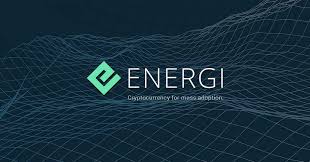With all the claims of Mt. Gox’s automatic trading bot, which has been called “Willy”, automated trading is getting a bad rep. However, the usage of bots to trade on the financial markets is a thing that has already existed for quite an amount of time and is legitimate activity – besides that it is easier to use trading bots in the cryptocurrency markets than in any other market.
How Do These Bots Work and Make Money?
Any kind of trading bots are software programs that have a direct bond with financial exchanges and do the process of buying and selling orders in your place. They make their decisions by analyzing the market’s price movements and reacting accordingly from a set of well-coded set of guidelines.
Joseph Lee is good proof that trading bots can make a profit. Joseph Lee, who created derivatives exchange BTC.sx, used algorithmic trading bots that he coded himself for basing its trading engine.
He claimed that he had turned a small $100 buy order into $200,000 in profits by using his private trading bot army. While that seems surprising, the secret is in the detail, a lot of that value increase comes from the insane price increase in bitcoin value.
In fact, he has said that the real profits are minimal, so do not expect to set up a mining bot army and write your own self-made riches story.
Joseph Lee claimed that his bots shifted 10% of the market’s entire volume in the early days of Bitcoin, he started using his method of trading when the price of the bitcoin sat at $2-$4 per coin.
Maker of the Market
Joseph’s first trading bots used inter-exchanged simultaneous buying and selling of coins by noticing changes in prices between orders on different exchange places, and buying on some exchanges while using other exchanges for selling.
He said that he was essentially taking liquidity from a market where there was some and injecting it into a market where there was none. Back at that time, Mt. Gox dominated the market, and other exchanges had bad pricing because their supply of bitcoins was limited to small amounts.
So, he bought bitcoin for cheap on Mt. Gox and sold it to other markets. He brought a lot of bitcoin into tertiary markets. He worked as a market maker on less-established exchanges.
A Practice That is Established
Joseph may have written his own trading bots, but nowadays, the cryptocurrency trading bot market is far more established, with a good amount of them available off the shelf.
These include Butter Bot, which offers the user a bot that is accessed with a Google Chrome plug-in, and a service called Haas Online, which provides people with a Windows-based personal trading server. CryptoTrader has a trading bot marketplace, which allows people to buy and develop bots by using different trading strategies and then sell or rent them to other people.
Trading with bots is not a new practice in the financial world: a lot of companies in the conventional financial markets have been using the method of trading bots for years. Joseph Lee said that the bitcoin exchange community is one of the first where exchanges grant customers computers direct market access.
Joseph Lee explained that this allows individual traders to have their computers access the exchange’s electronic order books directly. That service is usually only available to brokers and investment houses in the conventional markets. In the past, the people who had the possibility to pay for a $10,000-plus a year Bloomberg terminal with an API connection were the ones who could try their hand at bot trading.
Why Isn’t Everybody Doing This?
The founder of Butter Bot, Pablo Lema, says that bots are not a setup and forget technology that allows dilettantes to make money without any effort:
Trading bots require the users to have at least some understanding of the trading market, they need to be modified and tweaked by the user to match the predominant market conditions and also respect their own risk profile.
Strategy With Trading Bots
Joseph Lee started off by capitalizing on a highly inefficient market, where exchanges with plenty of liquidity could be counted on their fingers.
The case now is at least a little better now, but still needs improvement. Opportunities for inter-exchange buying and selling still exist, but Lee recommends using technical analysis bots.
Trading is not necessarily based only on technical analysis. It is difficult to code the computer to react to fundamental market conditions such as rumors, that drastically affect the value of cryptocurrency.
Most of the bots will use an exponential moving average (EMA) as their starting point. These averages monitor market prices over a set time span, and trading bots can be programmed to react to price changes for a set amount – such as moving beyond certain thresholds.
Lee advised trading on a slower basis if you are conservative in nature. If you picked daily instead of hourly periods, it is generally seen as a safe way to get involved in the basics of trading, let alone bot trading.
Other people suggest tweaks to the EMA approach. If you look at the biggest downside of an EMA then you would see that it is almost always too late, and this is the thing that can be improved.
This improvement could be done by using a double exponential moving average or a triple exponential moving average instead. Those have the ability to react faster than the EMA and their calculations are EMA-related, so it looks the same while it gives off better performance.
There are still other methods such as relative strength indicators and regression analysis.
This type of analysis works perfectly for processes, such as a price market, that is unstable. Using that data can make good sense of what’s to be expected in the future.
Secret strategies
Technical analysis is a discipline, and these things are indicators, not strategies. You are still going to have to come up with your own strategy for trading if you are planning to tell a bot how to make decisions.
As always, the most profitable strategies are kept secret and closed source. That is done by everyone: the mid and high-level traders and clearing houses. It is hard for a trader who is new to this field to understand how the market works.
The maker of the Crackin’ Kraken bot found on Cryptotrader points to a set of algorithms in a library of technical analysis algorithms known to the public as TA-Lib, alongside custom indicators developed by the bot author. This information is usually combined to find buy and sell signals in the market.
Bots can be programmed to predict or react, or a combination of both, by using these combined algorithms.
As an example, let us say the bitcoin price is going down. A predictive algorithm would start buying as it expects the price will quickly rebound, while a reactive algorithm would start selling because it sees that the price is dropping. Both types have their advantages and disadvantages as always – the challenge is to have the bot employ the correct strategy at the correct time.
The ability to set these strategies is one of the things that will cease bots from unbalancing the market. Even if vast amounts of people use them, the theory goes that the different strategies they employ would prevent them all from moving the market in one direction and creating an artificial bubble or worse, a flash crash.
Not for everyone
Is trading with bots good for you? Perhaps. They offer a variety of advantages, not least of which is the ability to diligently trade on your behalf without having breaks, and the ability to remove all of the emotion from trading.
On the other hand, if you do not have the financial smarts and motivation to put together a trading strategy, then your trading bots could simply end up automating a set of poor market trading decisions that would cost you a lot.
For a lot of people who believe in bitcoin’s long-term potential, the most basic trading strategy could be buy-and-hold.
Whether you do or do not decide to automate your trades, the basic rules apply anyways: do not trade more than you can afford to lose and do not go into any investment without at least a basic understanding of what you are doing.











